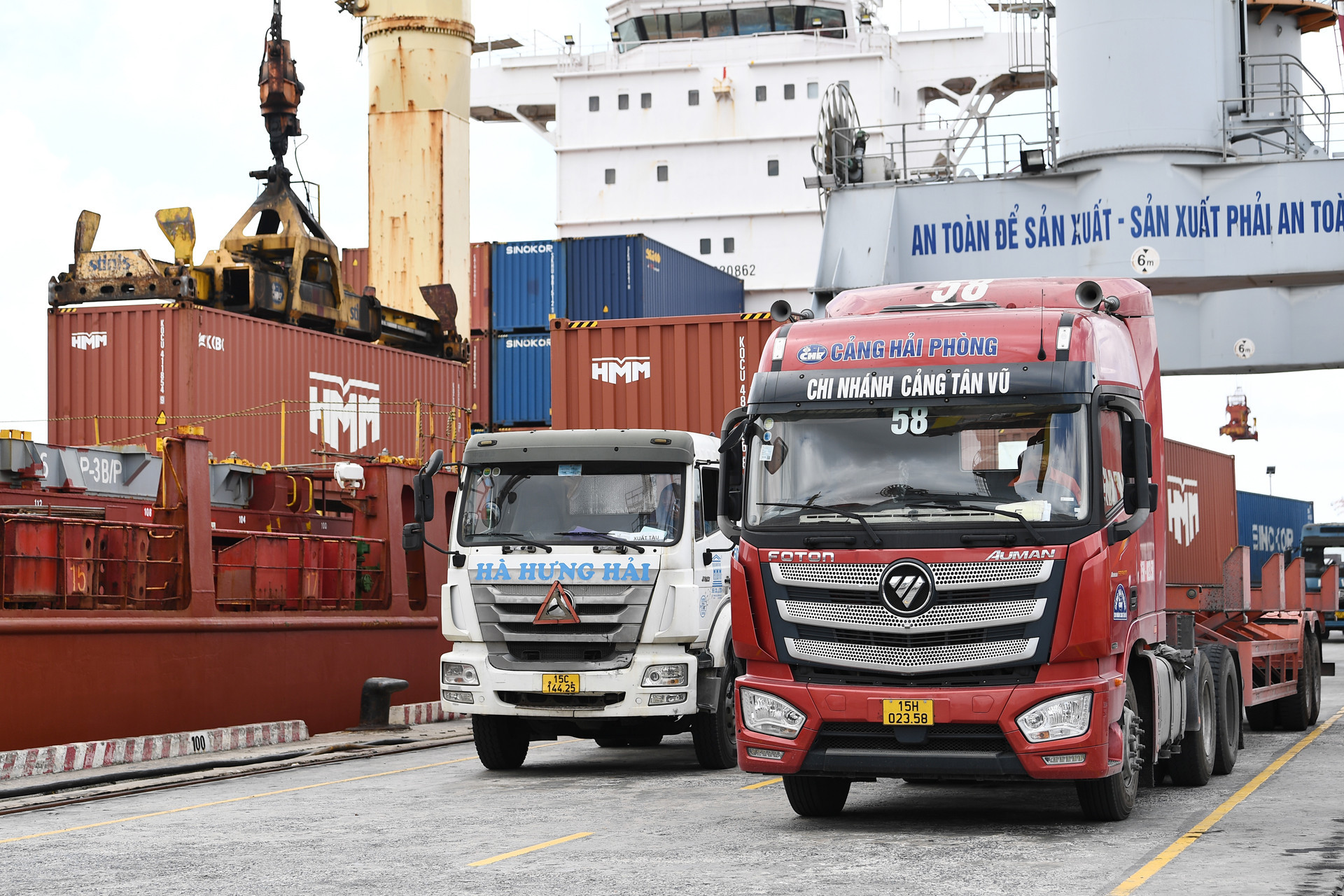
Economic prospects are leaving their mark on the lives of citizens and the production and business activities of enterprises. Photo: Hoang Ha
Attending the panel discussion “Policy Dialogue: Growth Recovery - Prospects and Challenges” organized by the Institute for Economic and Policy Research (VEPR) yesterday, I sensed a strong wave of optimism about growth prospects for 2024 that filled the room.
This positive sentiment radiated from the report presented, as well as from many attendees, including members of the National Assembly, economists, and researchers.
Perhaps there is no need to quote the speeches, as many newspapers have already covered them comprehensively. However, to illustrate this sentiment, I’ll share some data that seemed to garner consensus from everyone present.
First, this optimism was reflected in the two growth scenarios for this year.
In the high-growth scenario, Q4 growth is expected to reach 7.4%, similar to Q3, which would bring the overall growth rate for 2024 to 7%.
In the low-growth scenario, Q4 growth would fall below 7%, with annual growth for 2024 projected around 6.84%.
Thus, regardless of the scenario, the growth rate remains quite high for the “pivotal” year of 2024. Failure to meet this year’s target would have implications for subsequent years.
These assessments were supported by a host of figures. For example, GDP growth for the first nine months of this year reached 6.82%, more than 1.5 times higher than the 4.4% achieved during the same period last year.
Exports and imports also grew faster than anticipated, with total trade volume reaching $578.5 billion, an increase of 16.3% compared to the same period last year. The trade surplus hit $20.8 billion—an encouraging figure for the period from 2020 to 2024.
In addition, the industrial sector has recovered dramatically, realized foreign direct investment (FDI) hit a record high, tourism bounced back strongly, and the pace of money supply and credit growth has also recovered well.
There are many other positive figures as well.
After the Covid-19 period, when Vietnam’s economic growth was erratic—with more declines than gains due to fears of accountability within the bureaucracy and global instability—these positive figures signal a promising outlook.
In response to my recent article, “Vietnam's Growth Soars Like a Rocket,” many readers expressed interest and sought further clarification.
As a journalist, I turned to economic experts, those with specialized knowledge and experience in handling data, to provide more detailed insights for my readers.
First, these experts pointed out that the recovery in industrial production was the main driver of growth in the first nine months of this year. This is evident in the correlation between the Industrial Production Index (IPP) and the Value Added (VA) index of the industrial sector.
From 2016 to 2019, an increase of 1.11 percentage points in the IPP would generate a 1 percentage point increase in VA; during 2020-2021, a 1.05 percentage point increase in the IPP resulted in a 1 percentage point increase in VA. However, from 2022 to now, the relationship has shifted, with a 0.94 percentage point increase in the IPP creating a 1 percentage point increase in VA. Simply put, the VA growth rate is now outpacing the IPP growth rate, a phenomenon not seen in previous periods.
This shows that improved efficiency in VA is the main reason for the recovery in industrial growth.
Moreover, the economy is no longer reliant on capital-intensive growth as it was before. Social investment growth is now only a third to half of what it used to be, private investment growth is even lower, and public investment disbursement has remained low, with no significant increase from last year.
In the period from 2012 to 2019, an increase of 1.42 percentage points in social investment would result in a 1 percentage point increase in growth. Since 2022, this ratio has dropped to 1.14% for every 1%. In the first nine months of this year, GDP grew by 6.82%, outpacing the 6.8% growth in social investment.
This indicates that the quality and efficiency of Vietnam’s economy have improved dramatically, showing great resilience against natural disasters and global instability.
In short, the macroeconomic indicators are very good, even better than before the Covid-19 pandemic. These positive economic prospects will undoubtedly leave their mark on the lives of citizens and the production and business activities of enterprises in the near future.
The remaining challenge is how to translate these positive macroeconomic factors into tangible impacts on markets such as stocks, real estate, corporate bonds, and especially consumer spending.
Tu Giang